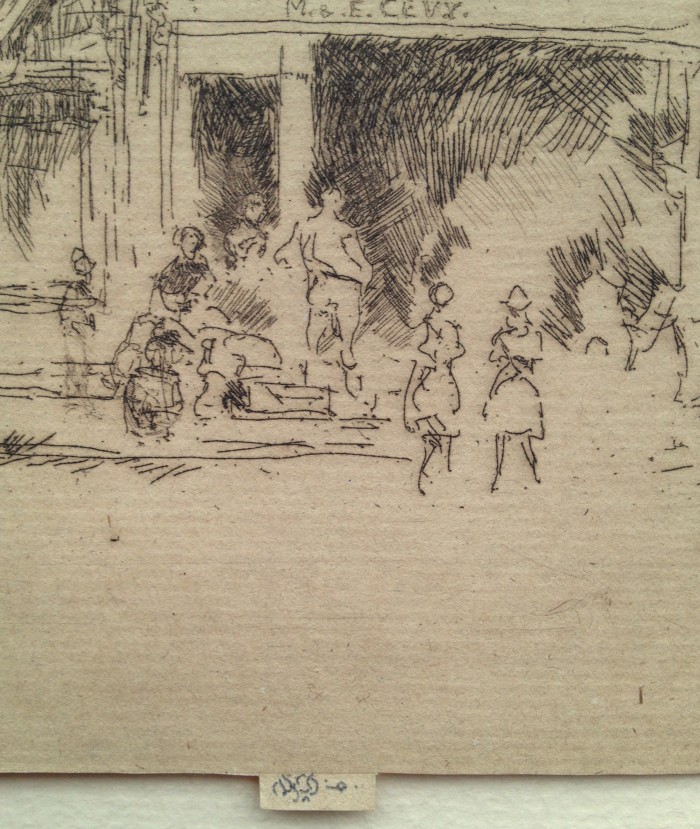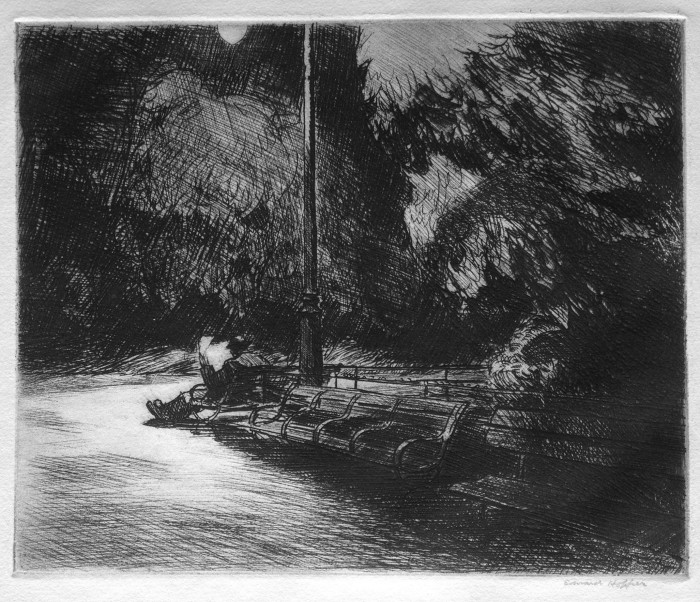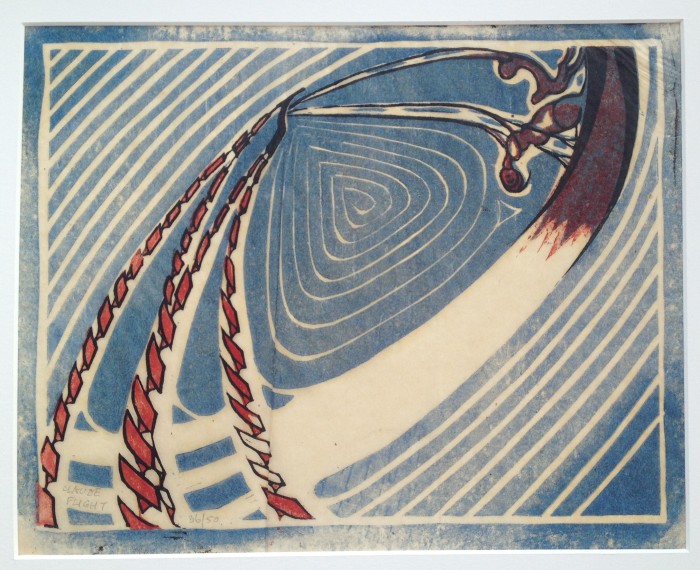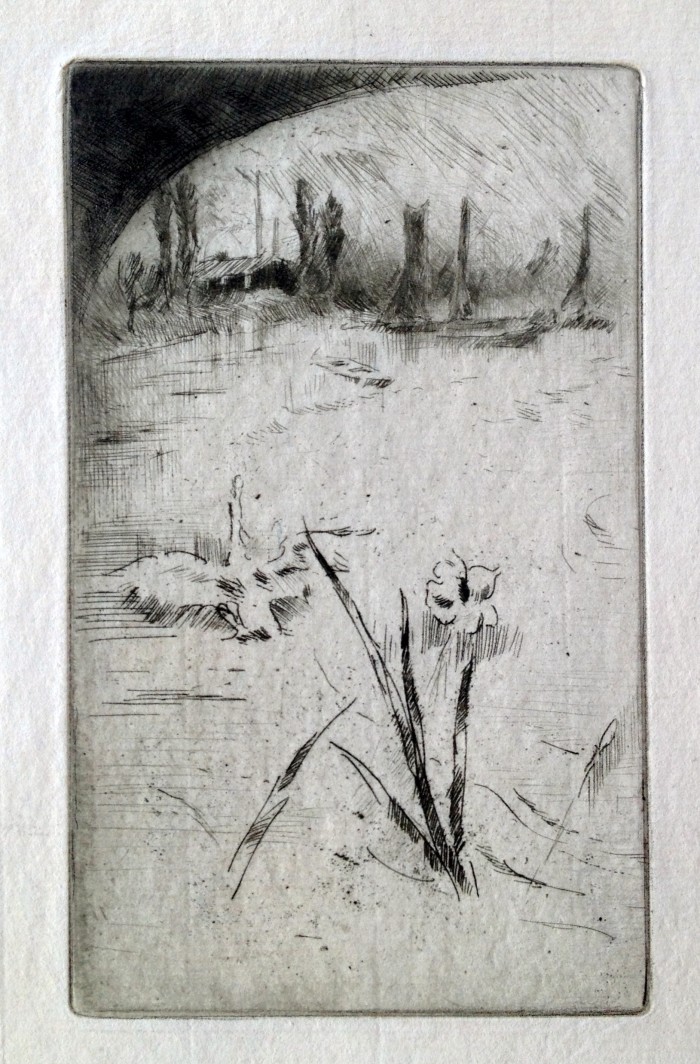The Little Mast
Sunday, May 31st, 2015James Whistler (1834-1903), The Little Mast, etching, drypoint and burnishing, 1879-80, signed in pencil with the early shaded butterfly lower left and annotated “imp”. References: Glasgow 196, Kennedy 185. Glasgow’s third state (of 8). From the Twelve Etchings, The First Venice Set. With margins, 10 5/8 x 7 1/2, the sheet 12 3/8 x 8 7/8 inches. In very good condition.
Provenance:
Charles C. Cunningham (with his stamp verso, Lugt 4684
James Lawrence Claghorn (with his stamp recto lower right, Lugt 555c)
Kennedy Galleries (with their stock number a94365 verso)
A very fine early proof impression, printed on a Chinese paper, with a light veil of plate tone heightened toward the bottom.
In the third state the figure in the middle just to the right of the buildings at the left is drawn in in drypoint; in the fourth state it is taken out. Also, in the third state an additional row of drypoint lines is added above the diagonal shading to the right of group of figures in the foreground; this additional row of drypoint does not appear in the second state. So we have deemed this a third state impression.
Early impressions of the second and third state, such as our example, were not trimmed, but signed in the margin with a large veined butterfly and ‘imp.’ to show that Whistler had printed them. Early proof impressions such as this one were delivered to the Fine Art Society in 1881; Whistler took many years to deliver additional impressions – as late as 1889 – in later states.
The Little Mast shows the view west down the broad Via Garibaldi to the Ponte de la Veneta Marina and the quayside, in the Castello area of the City of Venice, Italy. It was near the Public Gardens, and also near Whistler’s lodgings during the summer of 1880, at the Casa Jankowitz. This view, drawn accurately on the copper plate, is reversed, as usual, in the print. (source: Glasgow)







